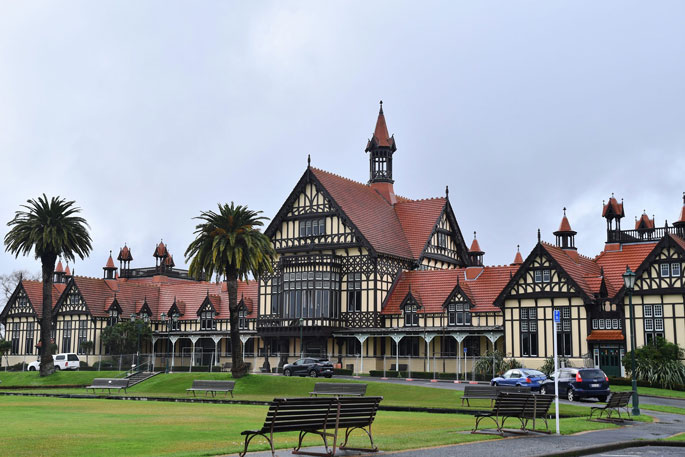A council's boss has defended the time taken to progress the Rotorua Museum - Te Whare Taonga o Te Arawa project, saying the work done will minimise surprises if the restoration were to go ahead.
Rotorua Lakes Council held the first of four workshops for councillors to learn the process behind the building-strengthening strategy for the iconic building.
The Category 1 heritage Bath House building closed in 2016 after it was found to be earthquake-prone.
The project to restore and re-open as a museum was now expected to cost at least $81.4m, with the extra cost proposed to be met through $9m of council funding and $19m of external funding, but hinged on a council decision on what to do next in August.
There were three options: fully restore and re-open the museum, stage the project or find an alternative for the museum.
The workshop was made open to the public in a move mayor Tania Tapsell said was for transparency.
While no decisions were made in workshops, councillors could ask questions and hear about the work that had gone into the strategy to strengthen the building.
Technical director Mike Jacka of Tonkin & Taylor provided an overview of how it had to work through normal geotechnical issues as well as geothermal issues.
An example was the ground temperature and associated risks: 'It gets to 60 degrees pretty quickly down there ... it's made us very keen not to be doing much down in the ground, it's a pretty difficult place to be.”
Fifteen years of reports helped inform him of the museum site but he said there would always be surprises once digging started.
He said they knew what approaches to take when that happened.
Risk was a key focus of the workshop and structural engineer Dr Dmytro Dizhur called it a 'beast of a building” during his presentation to councillors.
He also noted the implications of being a geothermally active area, including the movement of the building.
Cracks were seen across the building and 42 were being monitored, with four devices providing data for the last year.
 Cracking in the Rotorua Museum basement. Photo / Supplied by Rotorua Lakes Council under LGOIMA.
Cracking in the Rotorua Museum basement. Photo / Supplied by Rotorua Lakes Council under LGOIMA.
The data was so sensitive it showed daily movement fluctuations.
This was fundamental for feeding the strengthening design, he said.
The data meant an artificial simulation of an earthquake's impact on the building was made, showing where the problem areas were.
An instrumental piece of design work was done by basing themselves in the building for weeks at a time.
'We were almost living in the building.
'No assumptions were being made.”
He believed it was one of the most comprehensive site investigations undertaken on an existing New Zealand building.
'I have personally been in every single corner of this structure.”
The end result was a plan to strengthen the building to 80 per cent of what a new building standard would be for mitigating earthquake risk.
'It is buildable.”
Chief executive Geoff Williams said comments during public consultation included that the work had taken a long time.
”If you embark on one of these projects as complex as it is you are likely to assume a high level of risk.
'Instead what you've had is a team that's taken the time to really get to understand this building in quite an intricate detail.”
He said there was a solution in front of them that was able to be built and addressed the strengthening requirements that were not intrusive to the building's heritage value.
'It is maximally cost-effective.”
The extent of the investigation meant risks were minimised, he said.
- Public Interest Journalism funded through NZ on Air.




0 comments
Leave a Comment
You must be logged in to make a comment.